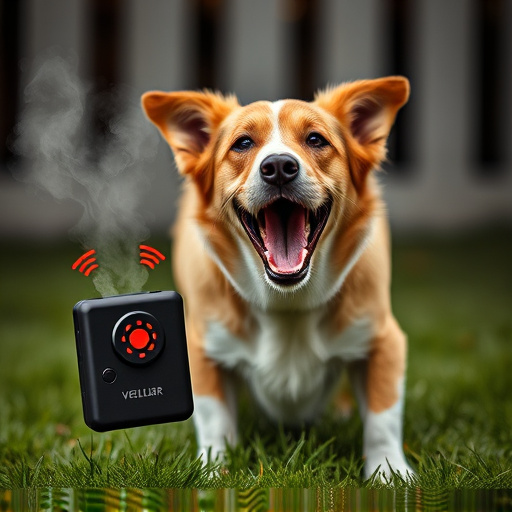Aggressive dog behavior stems from various factors. Recognizing signs of aggression and using handheld sonic dog deterrents, which emit inaudible high-frequency sounds, can help disrupt dogs' comfort zones without harm. However, these devices are most effective as supplementary tools alongside responsible pet ownership, training, and positive reinforcement. Understanding canine body language is crucial for safe interactions with pets, even when deterrents are used. While useful for unexpected encounters, their effectiveness may wane against trained guard dogs or aggressive breeds.
Personal protection from aggressive dogs is a serious concern, with many individuals seeking effective strategies to stay safe. This article explores three key areas crucial for navigating this challenge: understanding aggressive dog behavior, leveraging handheld sonic dog deterrents, and mastering safe interactions. By delving into these topics, we aim to equip folks with knowledge and tools to protect themselves in the presence of potentially dangerous canines, focusing on the growing interest in Handheld Sonic Dog Deterrent Effectiveness.
- Understanding Aggressive Dog Behavior: What You Need to Know
- Handheld Sonic Dog Deterrents: How They Work and Their Effectiveness
- Safe Interactions: Tips for Protecting Yourself When Facing an Aggressive Dog
Understanding Aggressive Dog Behavior: What You Need to Know
Aggressive dog behavior can stem from various factors, and understanding these root causes is essential for effective personal protection. Dogs may exhibit aggression due to fear, territorial instincts, lack of socialization, or even medical conditions. Recognizing signs of distress or impending aggression, such as growling, snarling, elevated tails, or stiffened bodies, can help individuals anticipate potential threats. Knowing these cues allows people to take preventive measures, like maintaining a safe distance or using handheld sonic dog deterrents, which have proven effectiveness in certain situations by emitting high-frequency sound waves that disrupt a dog’s comfort zone without causing harm.
While these devices can be useful tools, it’s crucial to remember they aren’t foolproof. Every dog and every situation is unique. Responsible pet ownership, proper training, and positive reinforcement can significantly reduce aggressive behavior in dogs. Understanding canine body language and responding appropriately can foster a more harmonious interaction between humans and pets, ultimately enhancing personal safety without relying solely on deterrents.
Handheld Sonic Dog Deterrents: How They Work and Their Effectiveness
Handheld sonic dog deterrents have gained popularity as a non-lethal method to protect individuals from aggressive dogs. These devices emit high-frequency sound waves that are inaudible to humans but irritating to canines, causing them to avoid or retreat. The technology is based on the principle of sensory overload, disrupting a dog’s balance and communication systems without causing harm.
While handheld sonic deterrents have shown promise in certain situations, their effectiveness can vary. They work best for unexpected encounters with stray or unfamiliar dogs. However, trained guard dogs or highly aggressive breeds might not respond as expected due to their specialized training or innate behaviors. Regular use may also lead to dogs becoming accustomed to the sound, reducing its deterrence over time. Therefore, it’s crucial to understand that these devices are supplementary tools for personal safety and should be used in conjunction with other preventive measures like maintaining awareness, carrying protective gear, and knowing how to react during a dog interaction.
Safe Interactions: Tips for Protecting Yourself When Facing an Aggressive Dog
When encountering an aggressive dog, prioritizing safety is paramount. One effective tool that has gained attention for its handheld sonic dog deterrent capabilities is the electronic device designed to emit high-frequency sounds. These devices have proven useful in deterring dogs without causing harm, as they target the dog’s auditory system. By using these tools, individuals can maintain their distance while sending a clear signal to the dog to back off.
Additionally, certain body language cues and techniques can further enhance safety during such interactions. Keeping your hands visible and avoiding direct eye contact can communicate non-threatening intentions. Maintaining a firm yet relaxed stance, with arms slightly raised or in a defensive position, signals confidence without appearing aggressive. If a dog approaches, slowly back away while speaking calmly to the animal, allowing it an escape route, which can often defuse an aggressive response.
